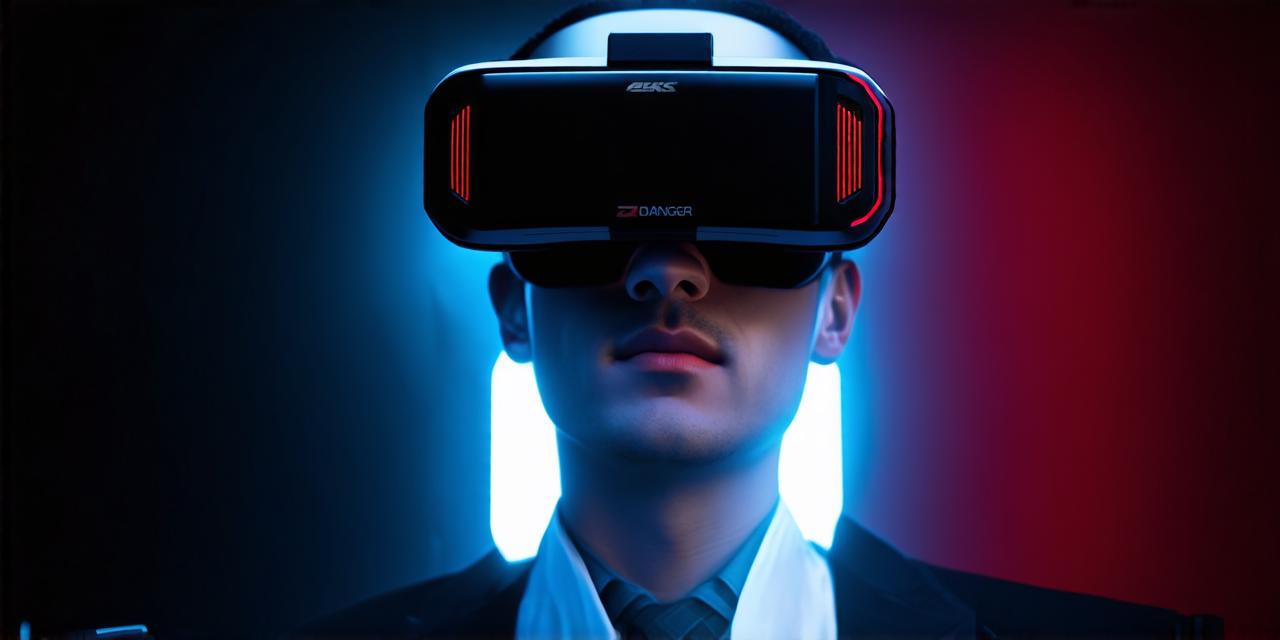Virtual Reality: A Brief Overview
Virtual reality (VR) technology has advanced rapidly in recent years and is gaining popularity as an immersive gaming experience. However, there are concerns about the potential dangers of VR and whether it can cause serious harm or even death.
Virtual Reality: A Brief Overview
Virtual reality is a computer-generated simulation that allows users to experience a three-dimensional environment as if they were physically present. VR systems typically consist of a headset, sensors, and controllers that track the user’s movements and adjust the virtual environment accordingly. The immersive nature of VR can be both thrilling and disorienting, leading some users to experience nausea, dizziness, or even motion sickness.
The Risks Associated with Virtual Reality
While VR is generally considered safe for most people, there have been some reported cases of serious harm or death associated with its use. These include falls, seizures, and accidents caused by disorientation or distracted behavior.
1. Disorientation and Motion Sickness
One of the most common side effects of VR is disorientation and motion sickness. This can be caused by a variety of factors, including the lack of depth perception in virtual environments, the fast-paced movements required to navigate the environment, and the mismatch between what the user sees and hears in the virtual world. In some cases, this disorientation can lead to falls or other accidents, particularly if users are not paying attention to their surroundings.
2. Seizures
While rare, seizures have been reported in some users of VR. These can be triggered by flashing lights, rapid movements, or other sensory stimuli that are common in virtual environments. In severe cases, seizures can be life-threatening and may require immediate medical attention.
3. Accidents and Injuries
As with any physical activity, accidents and injuries can occur while using VR. These can include falls, trips, or collisions with objects in the virtual environment. In some cases, these accidents can be severe enough to cause serious harm or even death. For example, a user who is disoriented by VR may trip and fall, leading to a head injury or other serious medical condition.
Case Studies: Real-Life Examples of Virtual Reality Dangers
1. The Death of a VR User in South Korea
In 2017, a man in South Korea died while using a virtual reality headset. According to reports, he fell from his chair and hit his head on the floor, causing fatal injuries. This tragic incident highlights the dangers of disorientation and motion sickness associated with VR.
2. The Case of a Seizure Triggered by VR
In 2016, a man in the United States suffered a seizure while using a virtual reality headset. According to reports, he was watching a video game when the flashing lights and fast-paced movements triggered a seizure. This case highlights the potential risks of seizures associated with VR.
Comparing Virtual Reality to Other Activities
When considering the potential dangers of VR, it is important to compare it to other activities that involve similar levels of risk. For example, extreme sports such as skydiving or bungee jumping also carry a risk of injury or death, but these risks are generally accepted as part of the activity. In contrast, the dangers associated with VR may not be immediately obvious to users and can therefore lead to unexpected accidents or injuries.

The Importance of Safety Measures
While there are some inherent risks associated with VR, it is important to note that these risks can be mitigated through safety measures such as proper training, monitoring, and equipment maintenance. For example, users should receive proper training on how to use VR systems safely, and equipment should be regularly checked for any potential hazards. In addition, manufacturers and developers should prioritize safety in the design and development of VR systems to ensure that they are as safe as possible for all users.
Conclusion: Is Virtual Reality Dangerous Enough to Cause Death?
While there have been some reported cases of serious harm or death associated with VR, these risks are generally considered to be relatively low compared to other activities that involve similar levels of risk. However, it is important for users to be aware of the potential dangers and take appropriate safety measures to minimize the risk of injury or death. In addition, manufacturers and developers should prioritize safety in the design and development of VR systems to ensure that they are as safe as possible for all users.
FAQs: Common Questions About Virtual Reality Safety
1. How can I reduce the risk of disorientation and motion sickness while using VR?
Proper training and adjusting the virtual environment to your preferences can help reduce the risk of disorientation and motion sickness. Additionally, taking breaks and moving around regularly can also help alleviate these symptoms.
2. What should I do if I experience a seizure while using VR?
If you experience a seizure while using VR, immediately remove the headset and seek medical attention. Do not try to treat the seizure yourself.
3. How can I prevent falls or other accidents while using VR?
Ensure that you are in a safe and stable environment before using VR, and always pay attention to your surroundings. Wearing proper safety equipment such as gloves or helmets can also help reduce the risk of injury.
